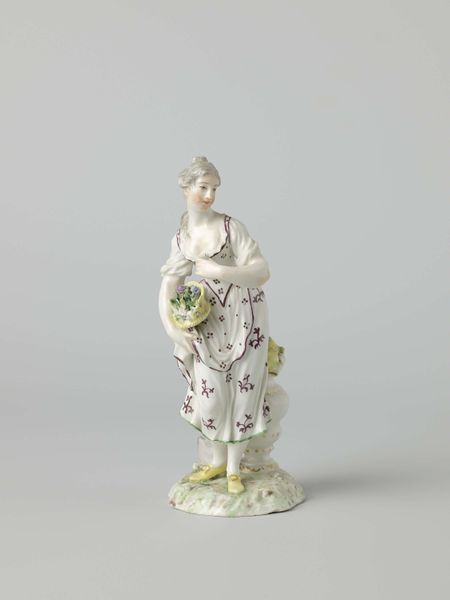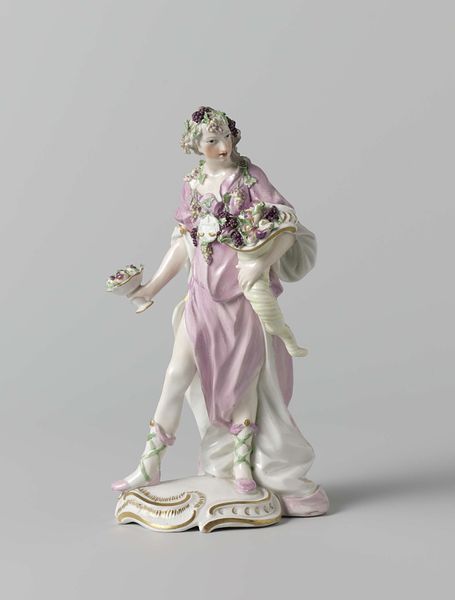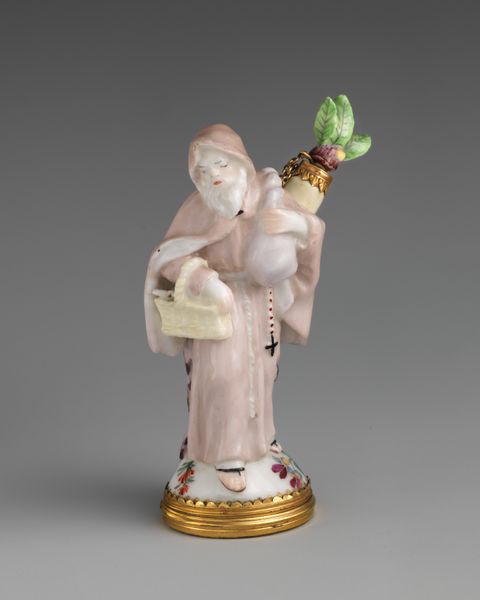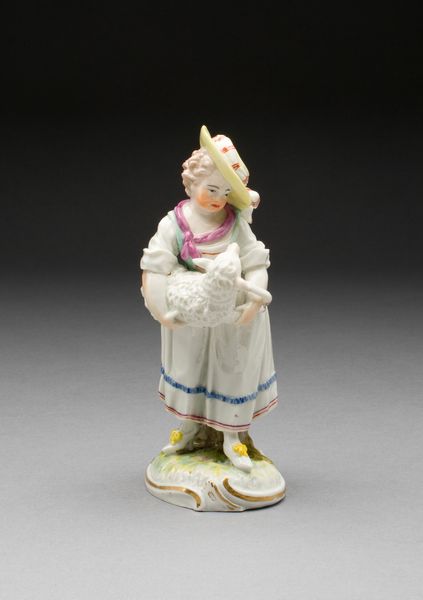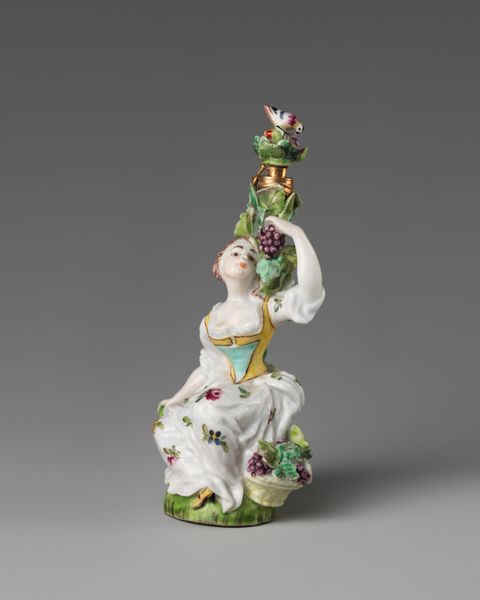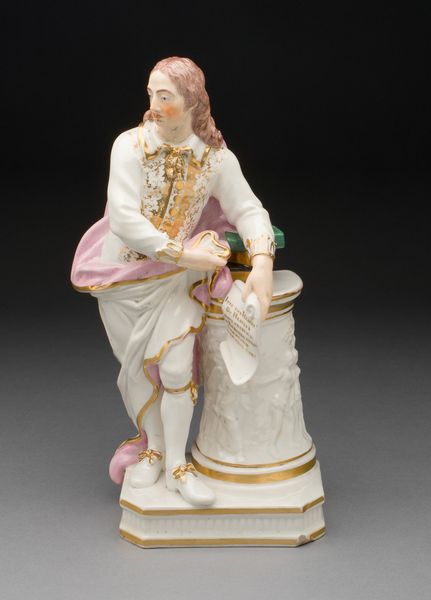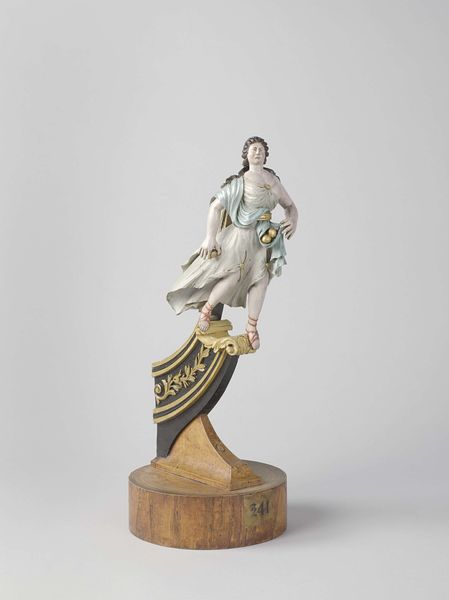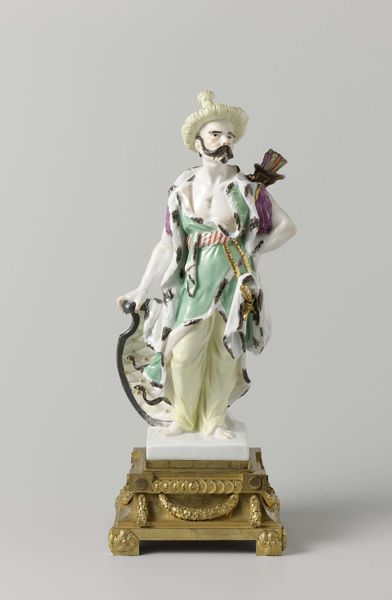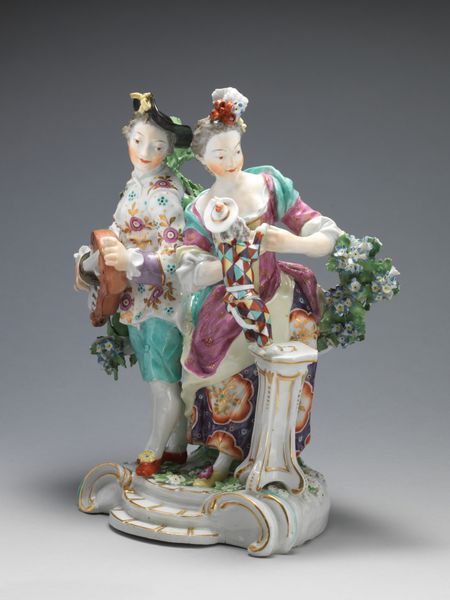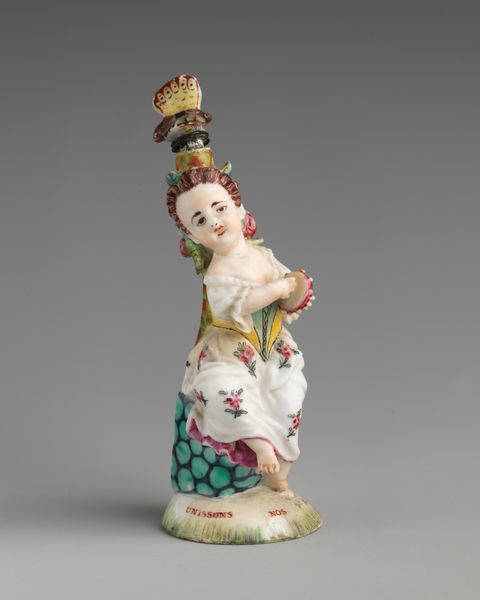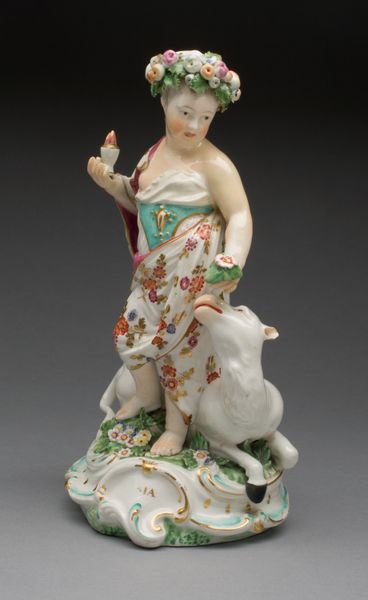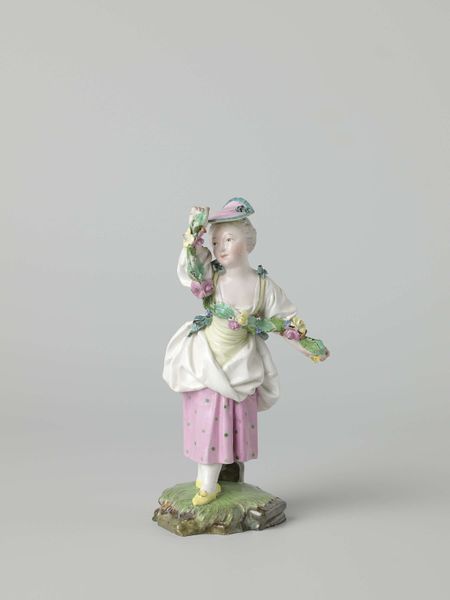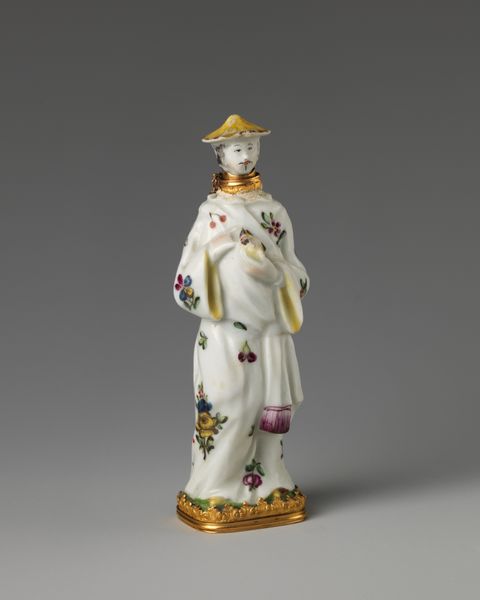
porcelain, sculpture
#
asian-art
#
porcelain
#
figuration
#
sculpture
#
orientalism
#
decorative-art
#
rococo
Dimensions: height 44 cm, width 17 cm, depth 16.8 cm, width 16.1 cm, depth 15.5 cm
Copyright: Rijks Museum: Open Domain
Editor: So this delightful piece is called "Two Chinese Figures," dating from around 1748 to 1765, and it's an anonymous porcelain sculpture. It feels very… fanciful to me, like a European imagining of Asian culture. What catches your eye? Curator: Exactly. Consider the symbolic weight of the “chinoiserie,” the Rococo interpretation of China in European art. Here, we have idealized figures bearing familiar European features in “Chinese” dress, carefully posed in ways designed to satisfy European sensibilities. What do these symbols evoke for you in relation to cross-cultural dialogue or, perhaps, miscommunication? Editor: Well, the costumes are so ornate and the figures are striking, almost theatrical, but it’s not necessarily accurate to any one Asian culture. I guess I see it more as a reflection of Europe's idea of the Orient. Curator: Precisely. Consider also that this "orientalism" carries power dynamics. European powers at this time actively engaged in colonization in Asia. How might the idealized portrayal in contrast with violent encounters abroad affect European cultural memory or continuity? Editor: That makes sense. So it is a way of perhaps masking or ignoring these histories in favor of a fantasy of the exotic "Other," rather than engaging in a genuine cultural exchange. Curator: And look, too, at how Rococo design favours asymmetry. How might asymmetry play a role here beyond decoration? Do you read an emotional imbalance or perhaps instability into the piece? Editor: Yes, you're right! The poses feel affected rather than natural, maybe revealing some tension. Curator: Indeed, tension that points back to Europe, revealing more about its cultural expectations and power dynamics. This has been insightful. Editor: Absolutely, I hadn't thought about it in those terms, connecting aesthetic choices with a history of imperialism. Thanks for pointing that out!
Comments
rijksmuseum about 2 years ago
⋮
These porcelain figures were made in Meissen and mounted in Paris on gilt-bronze (ormolu) bases. The design of the bases corresponds with that of the base of the clock with the elephant also on display here. This was a way of creating a cohesive ensemble.
Join the conversation
Join millions of artists and users on Artera today and experience the ultimate creative platform.
